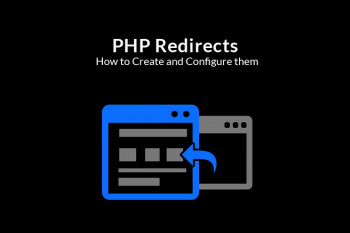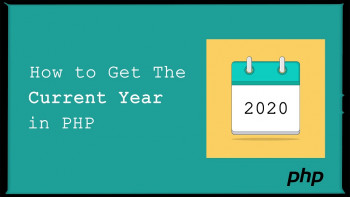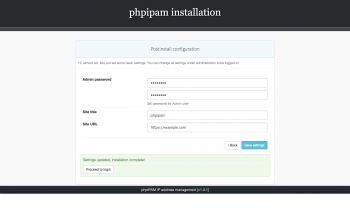PHP-FPM provides an alternative FastCGI daemon for PHP that allows a website to handle significant loads.
Here at Ibmi Media, as part of our Server Management Services, we regularly help our Customers to perform cPanel related tasks.
In this context, we shall look into PHP-FPM Code and FileSystem Layout for EasyApache.
More about PHP FastCGI Process Manager (PHP-FPM) ?
PHP FastCGI Process Manager (PHP-FPM) daemon involes the following:
i. The PHP-FPM filesystem layout.
ii. How the system implements PHP-FPM on your system.
PHP-FPM provides an alternative FastCGI daemon for PHP that allows a website to handle significant loads. It allows a host to set specific amounts of resources to process a domain’s requests via workers available to respond to PHP requests (pools).
PHP-FPM does not overload a system’s memory with PHP from Apache processes. It only executes PHP requests, which enables it to serve content quicker than other methods.
We can only activate Apache PHP-FPM if the server has at least 2 GB of RAM available, or at least 30 MB of RAM per domain. If we enable PHP-FPM on a server with less than the required RAM, the server may experience severe performance issues.
PHP-FPM Code and FileSystem Layout for EasyApache
In order to understand PHP-FPM code and Filesystem layout, we will cover a few topics which is relevant.
PHP-FPM implementation
The Cpanel::PHPFPM (Cpanel/PHPFPM.pm) module provides the basis of EasyApache support with PHP-FPM. The module’s built-in defaults generate configuration files that provide fully functional PHP-FPM pools for a domain.
The system uses the following configuration files:
/var/cpanel/ApachePHPFPM/system.yaml
/var/cpanel/ApachePHPFPM/system_pool_defaults.yamlWe will need to create these two files manually. To do this, we perform the following steps:
i. To Create the /var/cpanel/ApachePHPFPM/ directory, execute:
mkdir -p /var/cpanel/ApachePHPFPM/ii. Eventually, create the two files.
touch /var/cpanel/ApachePHPFPM/system.yaml
touch /var/cpanel/ApachePHPFPM/system_pool_defaults.yamlFile contents
Each file contains different directives from the built-in values.
The following example displays the system.yaml file’s contents:
—
daemonize: yesThis example only uses a different value than the built-in default for the daemonize setting.
The system-pool-defaults.yaml file applies the value to each pool that we create.
Each domain in the system requires that we create one pool.
Replace any unacceptable characters such as .[]() with an underscore _.
The table below contains examples of unacceptable value names:
Old Name New Name
syslog.facility syslog_facility
php_admin_value[disable_functions] php_admin_value_disable_functionsThe filesystem configuration files
The system stores the configuration files that control PHP-FPM in the following files:
/opt/cpanel/ea-php54/root/etc/php-fpm.conf – This file contains the system configurations of PHP-FPM.
/opt/cpanel/ea-php54/root/etc/php-fpm.d/[domain].conf – This file changes the domain to the domain setting of the website that we use. For example, the cptest1.tld.conf domain.
The .yaml files within the /var/cpanel directories generate these two files.
Do not edit these configuration files manually.
The system duplicates these configuration files for each version that we select.
The /opt/cpanel/ea-php54/root/etc/php-fpm.d/[domain].conf file displays ea-php54 or php54 as its version.
Required files
We use the required file /var/cpanel/userdata/[user]/[domain].php-fpm.yaml only if we wish to run PHP-FPM.
/var/cpanel/userdata/[user]/[domain].php-fpm.yaml – This file controls a specific domain’s pool. The system uses the built-in default values and system_pool_defaults values to generate the [domain].conf file.
Optional files
We use the following optional files only if we wish to change the default parameters. All domain pools use these defaults unless a .yaml file overrides them.
/var/cpanel/ApachePHPFPM/system.yamlThis file contains system-level settings. The system also uses this file to generate the /opt/cpanel/ea-php5?/root/etc/php-fpm.conf file, where the ? indicates that the system uses this file to generate all of the PHP versions in the php-fpm.conf file.
/var/cpanel/ApachePHPFPM/system_pool_defaults.yamlThe system uses this file to generate each domain’s pool and configure each user’s pool.
Restore PHP to the system
The system cannot remove configurations or other related files when we manually remove RPMs. If we manually remove RPMs, we could remove dependencies that our hosted websites require.
It is recommended to perform yum remove operations with any ea-php RPMs.
If we remove PHP from the system while any of the hosted websites still use it, those websites will display errors. In addition, Apache could fail to display the website entirely.
Before we perform a yum remove, confirm that none of the hosted websites use the PHP version that we wish to remove with WHM’s MultiPHP Manager interface.
To restore PHP versions to the system, we run:
ea_install_profile –install /etc/cpanel/ea4/profiles/cpanel/default.json
/usr/local/cpanel/scripts/restartsrv apache_php_fpm[Need to fix cPanel issues? Contact us now! ]
Conclusion
This article will guide you on how PHP FastCGI Process Manager (PHP-FPM) daemon works. PHP-FPM Code and FileSystem Layout for EasyApache allows the website to handle loads.
As PHP-FPM receives a proxied connection, a free PHP-FPM worker accepts the web server's request. PHP-FPM then compiles and executes the PHP script, sending the output back to the web server. Each PHP user can have its own separate pool of worker processes for handling PHP requests.
FPM (FastCGI Process Manager) is an alternative PHP FastCGI implementation with some additional features (mostly) useful for heavy-loaded sites. These features include:
i. Ability to start workers with different uid/gid/chroot/environment.
ii. listening on different ports and using different php. ini (replaces safe_mode).
This article will guide you on how PHP FastCGI Process Manager (PHP-FPM) daemon works. PHP-FPM Code and FileSystem Layout for EasyApache allows the website to handle loads.
As PHP-FPM receives a proxied connection, a free PHP-FPM worker accepts the web server's request. PHP-FPM then compiles and executes the PHP script, sending the output back to the web server. Each PHP user can have its own separate pool of worker processes for handling PHP requests.
FPM (FastCGI Process Manager) is an alternative PHP FastCGI implementation with some additional features (mostly) useful for heavy-loaded sites. These features include:
i. Ability to start workers with different uid/gid/chroot/environment.
ii. listening on different ports and using different php. ini (replaces safe_mode).















